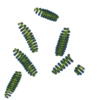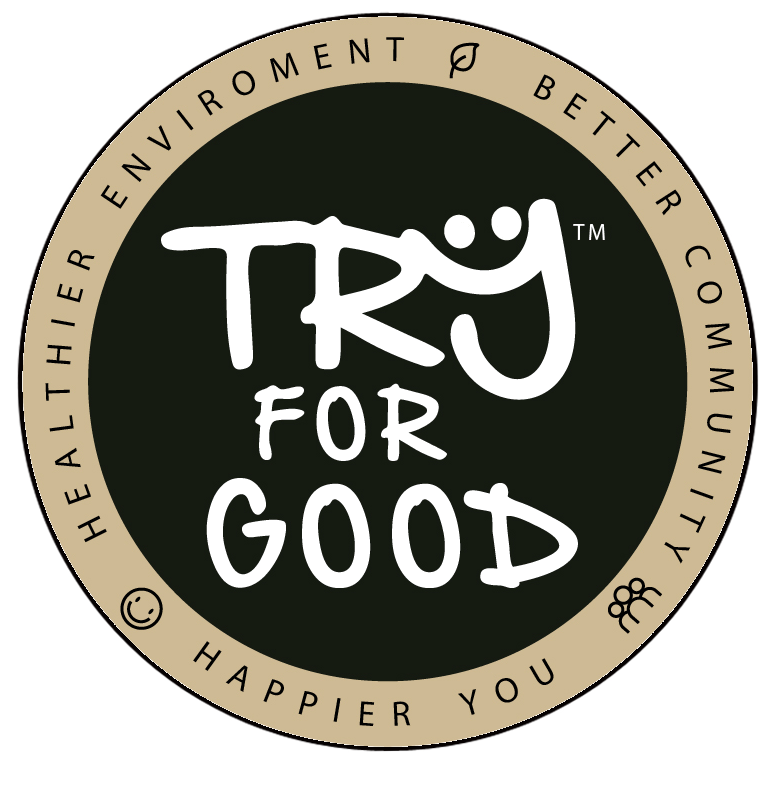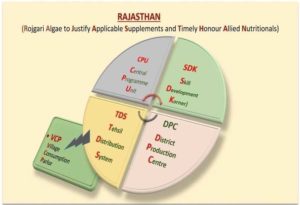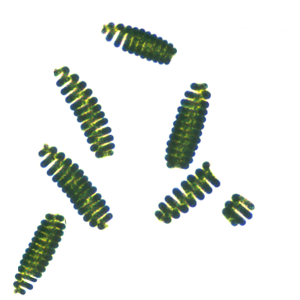
Dr. Randhir Gajraj on GMO
May 13, 2017 in Articles
GMO a new age mankind Gen-Thing though not so desirable by all; but more of a necessitated desperation urge of the homo sapien so as to acclaim something new they thought of or evolved or a novel mean to serve a his own mistake based needs.
GMO are not so desired and not so welcomed as they are not natural nor means of sustainable but ate mostly anti-nature beings. The whole of Europe and many a developed nations opposed especially for their role in inroads in food and feed arena, Asian and third World are compelled to accept by the need of time but not by acceptable say of their heart and nod of their mind.
It’s primarily the food and feed sector that has triggered the thought and emergence of GMO’s only because if uncontrollable surging human population needs directly and indirectly. Man’s greed and not so stopping of their needs are thus paving a way to thrust upon not so nature caring deeds. What for?? How long??
It’s the need for more of agriculture produce or more livestock to breed the GMO Gen-Thing surfaced just of a compulsion and not of every human’s earnest seek. The lost art of ancient sustainable agriculture and able livestock rearing paid way to use of not desirable need-based synthetic fertilizer and pesticides and weedicides etc just to keep alive the monstrous greed of the unchecked nature-phobic homo’s. Man in its own need based zones destroys one better thing and tries to evolve another out of nature not so natural entity; the GMO to suffice it’s own head feel to bring in a not so sustainable mean, non earlier prevailing keen, but a new non so bio communicable gene. Just to create a dead stop for the other many a naturalist beings, the insects, the birds and the creatures who have all the birth rights to thrive on plants for their survival needs. Why GMO when a perfect chemical harmony of most of the Medvedev’s table when can duly combine with laws of nature’s Physic can very well sustain and maintain an ecosystem plants and animals of its own on its own; free from disease, ailments full of essence, the vigor and bountiful productivity. .., .
Nature the supremo: for all and of itself to survive and sustain has the needed knowledge and capacity to make a new Gen-Thing which duly evolve on time without fail to meet a need. Man in its own need and to show I am the supreme is poking to alter natural thing into the GMO the next Gen-Thing; without even knowing and fully validating its long-term impact feel. Well looks just to see its own one last downfall and those of other innocent beings too forever in the name of a gimmick the GMO; the so proclaimed educated human created self destruction wheel.

Malnutrition in India, overcome by Algae
February 27, 2017 in Articles
Introduction
Malnutrition and Anaemia Scenario in India
- 38.4% of children under age of 3 are stunted, too short for their age and 46% are underweight, too thin for their age. Not much change since the year 1998 – 99.
- Wasting, defined as an abnormally low weight for the child’s height affects 19% of children under age of 3 with a slight deterioration from 1998 – 99.
- Overall, girls and boys are about equally likely to be undernourished. Under-nutrition is higher in rural areas and is strongly correlated with the level of maternal education showing a two-fold difference between non-educated mothers and 10-year and above educated mothers. This may be linked to a stark difference in access to a nutritious diet and complementary feeding at 6 – 9 months.
- Most children under age three are anaemic (79.2%). The prevalence is slightly higher in rural areas and among non-educated mothers. High prevalence of anaemia may be linked to poor variety of diet, poor hygienic conditions and limited access to iron supplementation. But they need other nutritionals and the folic acid to assimilate Iron.
A significant percentage of Women and Men Are Either Too Thin or Too Fat
- Malnutrition and anaemia are common among Indian adults. Both malnutrition and anaemia have increased among women since 1998-99.
- 33% of married women and 28% of men are too thin, according to body mass index (BMI), an indicator derived from height and weight measurements. Underweight is most common among the poor, the rural population, adults who have no education and scheduled castes and scheduled tribes and Rajasthan have many of them.
- Overweight and obesity, the other side of malnutrition, is a growing problem in India, affecting almost 15% of women and 12% of men. Overweight and obesity are most common in urban areas, in wealthier households, and among older adults, Sikhs and those with more education.
Anaemia Is Widespread
- 56.2% of women and 24.3% of men suffer from anaemia, and have lower than normal levels of blood haemoglobin. Anaemia has increased in ever-married women from 1998-99. Among pregnant women, anaemia has increased from 50% to 58%.
- Only 22.3% of pregnant women consume Iron and Folic Acid supplementation for 90 days and the percentage is less than 10% among the poor and non-educated women compared to 50% among the well-educated. Also the disparity between rural and urban areas is significant (18% and 34.5% respectively)
Many Households Are Vulnerable to Iodine Deficiency
- Iodine deficiency, which can lead to mental retardation, goitre, and complications of pregnancy, is easily prevented by using algae or salt fortified with iodine. Only 51% of the Indian households use adequately iodized salt and least use marine algae.
Malnutrition in Rajasthan
Malnutrition is India’s silent emergency and among the greatest human development challenges. Although the country has seen strong economic growth over the past decades, malnutrition remains a serious public health threat, with estimated 5.7 million children under 5 years of age who suffer from Severe Acute Malnutrition (SAM). 10% of these present with medical complications and require hospitalization.
Rajasthan is affected by malnutrition with an under 5 mortality rate of 57 and prevalence of SAM at 2.9%.It is against this backdrop the Government of Rajasthan’s National Health Mission, supported by GAIN, UNICEF and Action against Hunger is working to improve nutrition in state through Community-based Management of Acute Malnutrition (CMAM).
The successes, lessons learned and results of the POSHAN Project, the National Health Mission, Rajasthan, in partnership with the Inter-ministerial Task Force on the Severe Acute Malnutrition encouraged other Indian states to follow the Rajasthan example, Mr. Naveen Jain, Managing Director, National Health Mission, Rajasthan announced that in view of the excellent results achieved “The National Health Mission, Government of Rajasthan is geared up to scale up the POSHAN Project to cover 25,000 children in 62 districts”.
The Way Ahead:
Our own Sambhar and Jal mahal based naturally occurring micro plant’s so called algae or “Kae” are there since time immemorial or ages; to share and add on many needed nutritional benefits to POSHAN project of Rajasthan state. These two algae if termed and delivered as RASD – Rajasthani Algae Spirulina and Dunaliella can surely revolutionise the very aim and objective of eradicating anaemia, malnutrition and night blindness at one go with a meagre delivery of few a gram a day of both to children and women and expecting and lactating mothers could change the malnutrition, anaemia and night blindness infested scenario of our state and of the rest of motherland India in lieu of malnutrition, Anaemia and night blindness.
The natural pro Vitamin-A from Sambhar based alga Dunaliella salina; which is tamed and mastered at Sabran Bioentrri is ready to deliver a powerful antioxidant which can eradicate the cataract, heart ailments and also many a types of cancer among masses. It can be given as much needed Vitamin A in our livestock’s.
And the Jal mahal base and ably domesticated by us; the other alga Spirulina can be the best ever know super health food packed with over 65% proteins, all 18 amino acids, 13 suitable vitamins, with all possible known health aiding antioxidants and minerals especially the Calcium and Iron in higher levels than milk and meat or even eggs and is a vegetarian source, making them easy to accept by Indian masses.
Our innovative product “Her Bhujia” which is an amalgamation of traditional Rajasthan’s pet snack the Bhujia is ready to arrive, stay and ably assist its support and needed nutritional shoulder in the POSHAN scheme of the Rajasthan state our able and dynamic health and nutrition ministry. http://spirulinaacademy.com/bhujia-new-spirulina-product-from-india/
Sabran Bioenttri; leader in many an algae based biotech’s and innovations with all possible algal techs in its portfolio, is ready to shoulder project POSHAN via its RASD route and to train and get educated youth of our Rajasthan state jobs at urban and rural areas through our ideated project: Rojgar Algae to Justify Applicable Supplementations and Timely Honour Allied Nutritionals (RAJSATHAN) to bring health, livelihood and income among masses.

Green Algal Revolution
November 25, 2016 in Articles
ALGAE -Aligned to Light; the Green Antenna Entity
If rapid industrial revolution and urbanization is a topic of immense discussion under sustainability, out Mother Nature has also blessed us with to find out solutions. The natural resources- water, air, soil, minerals, fuel and space are being exhausted by human beings with a faster rate. This is resulting into shrinking the fertile and arable lands, while pollution in the air and the water is increasing. Algae, a less popular wonder of nature comes to help here.
Algal organisms have antiquity dating back to 3.2 billion years or more. They have the fastest regenerating lives, with the biggest plus being that they make their abode in varied habitats from cold to warm or hot spots and thrive equally well in the arena of fresh, brackish to marine waters anywhere in the world.
The algal cultivation and innovation is seeing the light of the day now at the Industrial level and is being recognized for its manifold advantages including its ability to grow in the waste water. The bio based industries, the dairy, the confectionary, plants, fishery and similar industries are continuing to cultivate algae for waste water treatment. The algae consumes greenhouse gas – CO2, the chemical present is waste waters of urban, rural and industry origin and releases oxygen back into the environment.
Algae has not only proved as a cheap and better source of high level protein ((72% plus), amino acid (essential and non-essentials), vitamin and mineral bio-source for humans and animals; but also provide life regenerating molecules like the Omega – 3 and Omega -6 fatty acids – DHA, EPA and GLA, the Natural Mixed Carotenoids (NMCs). The natural Beta Carotene, Lutein, Zeaxanthin are therapeutic to ease and erase out problems of growing obesity, heart and brain ailments, ageing, work related stress, malnutrition, eye and muscle disorder, immunity related disorders and of course cancer and skin related disorders. The popular algae are Chlorella, Spirulina and Haematococcus with its rich antioxidant’s – Astaxanthin on demand.



